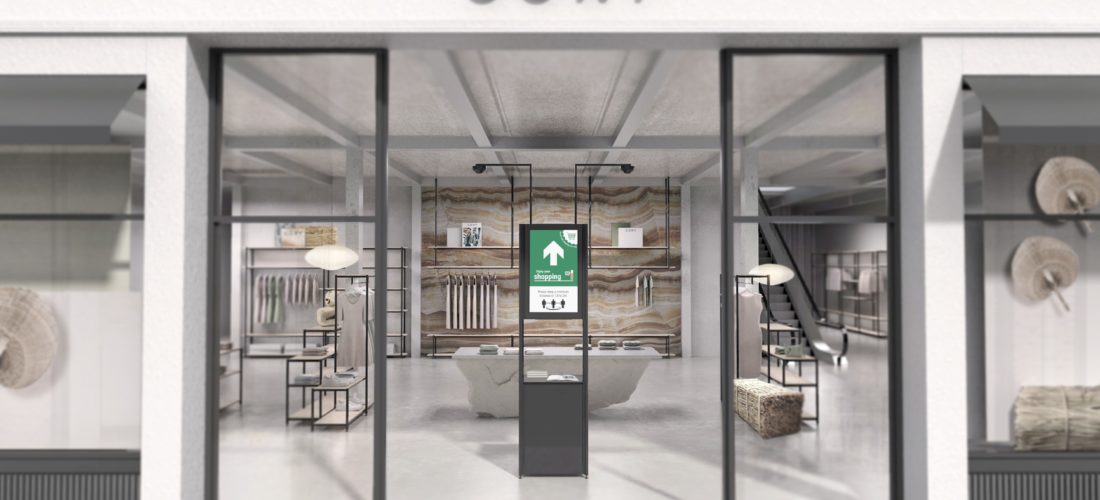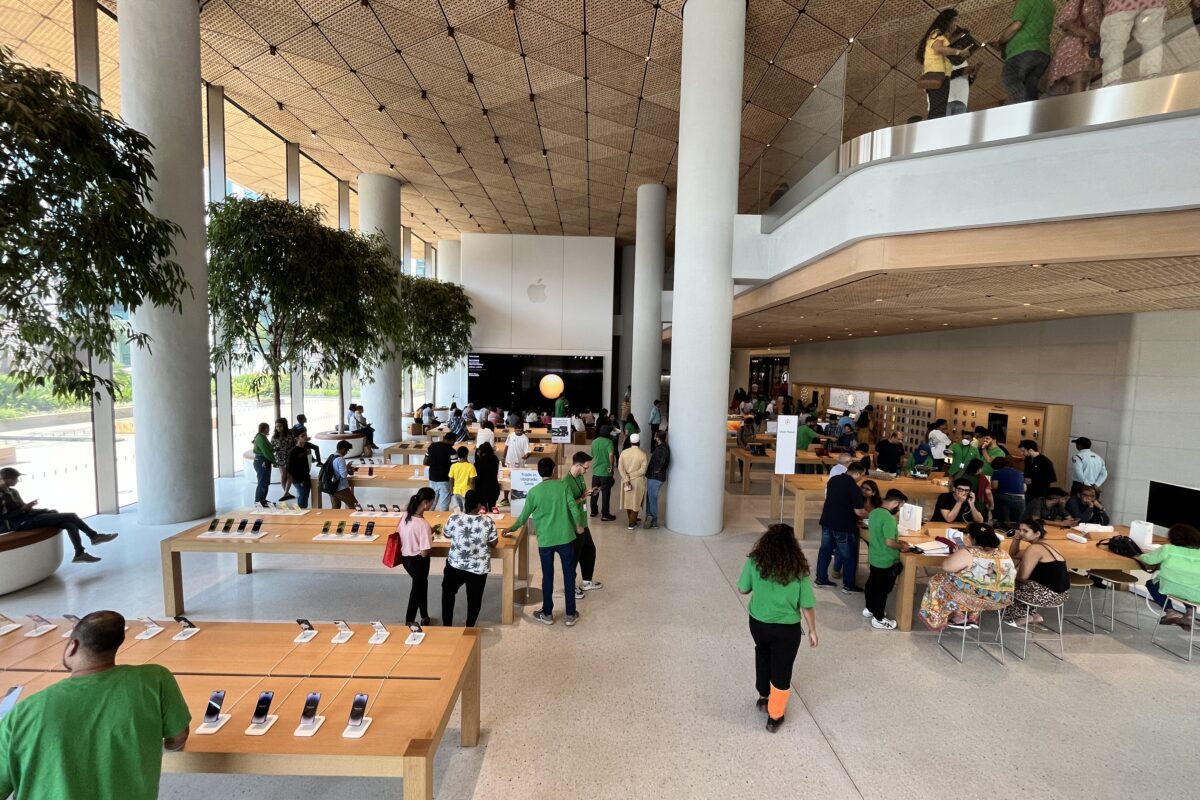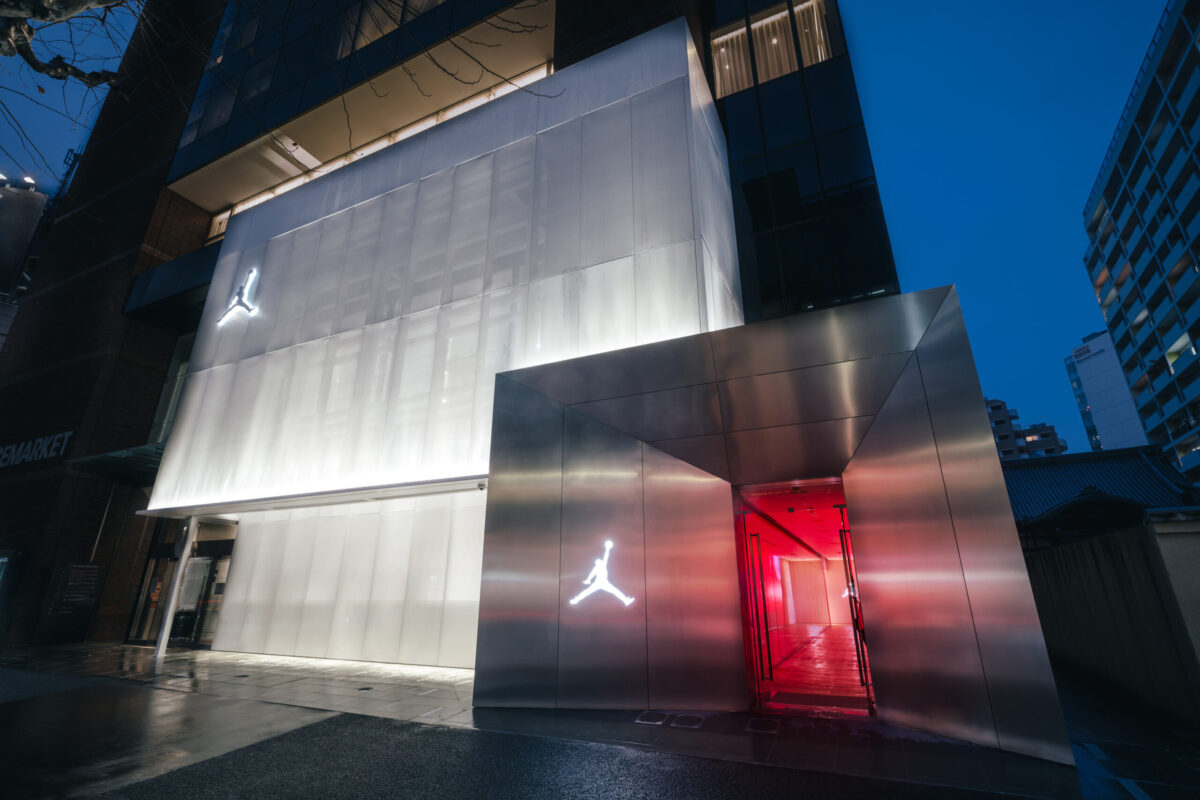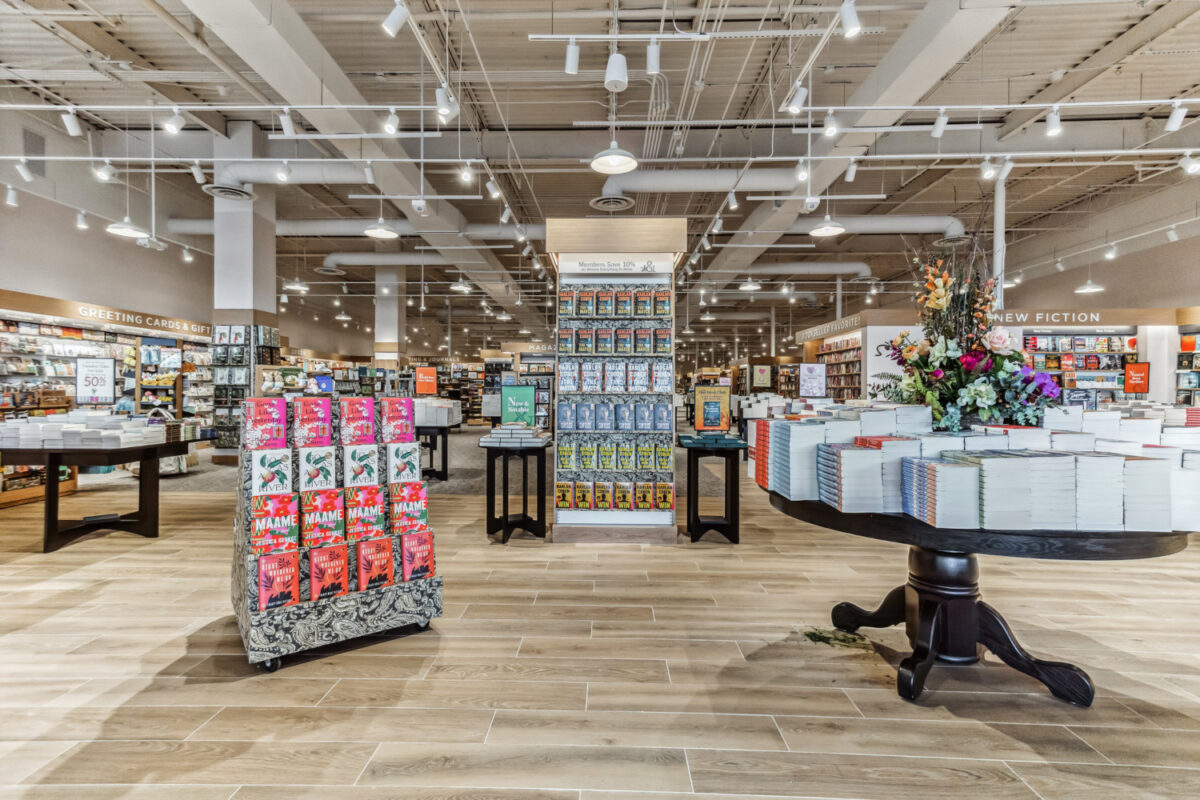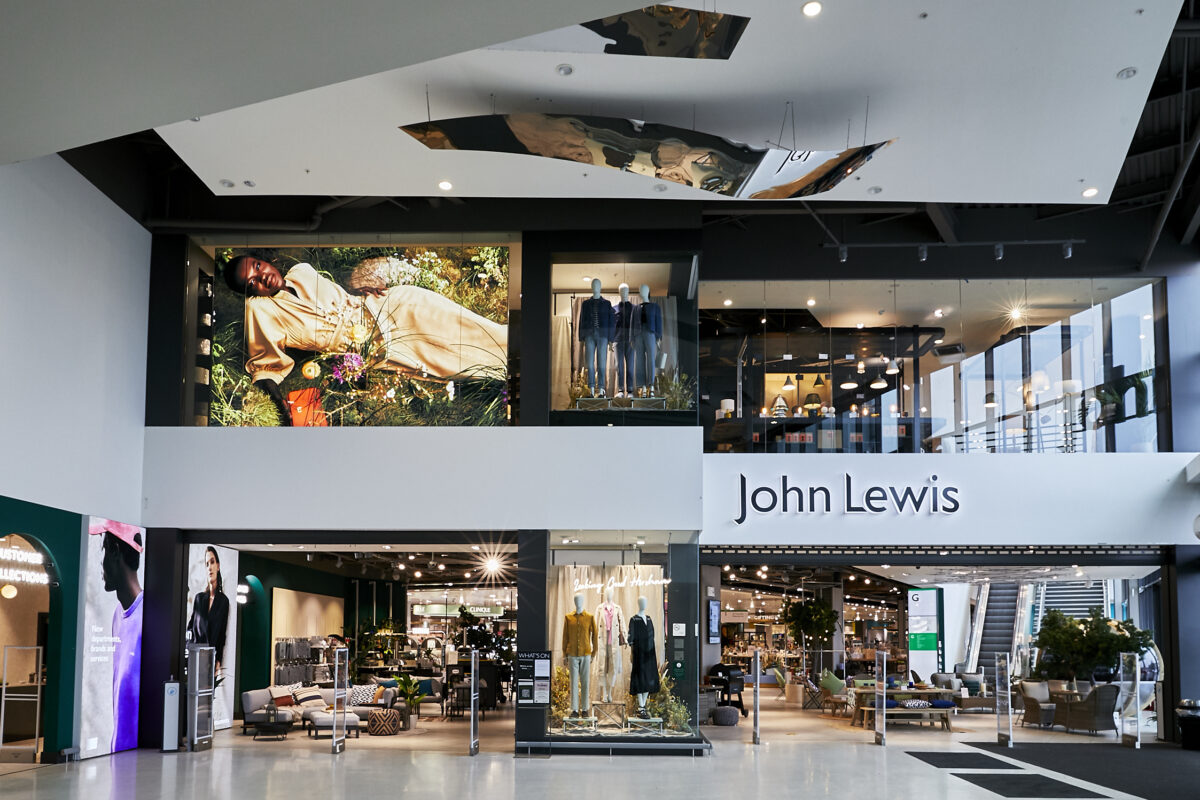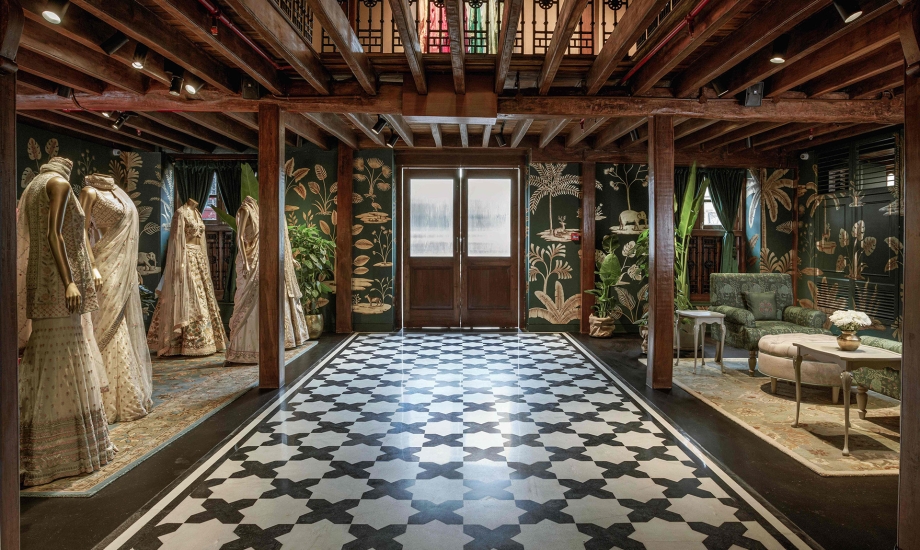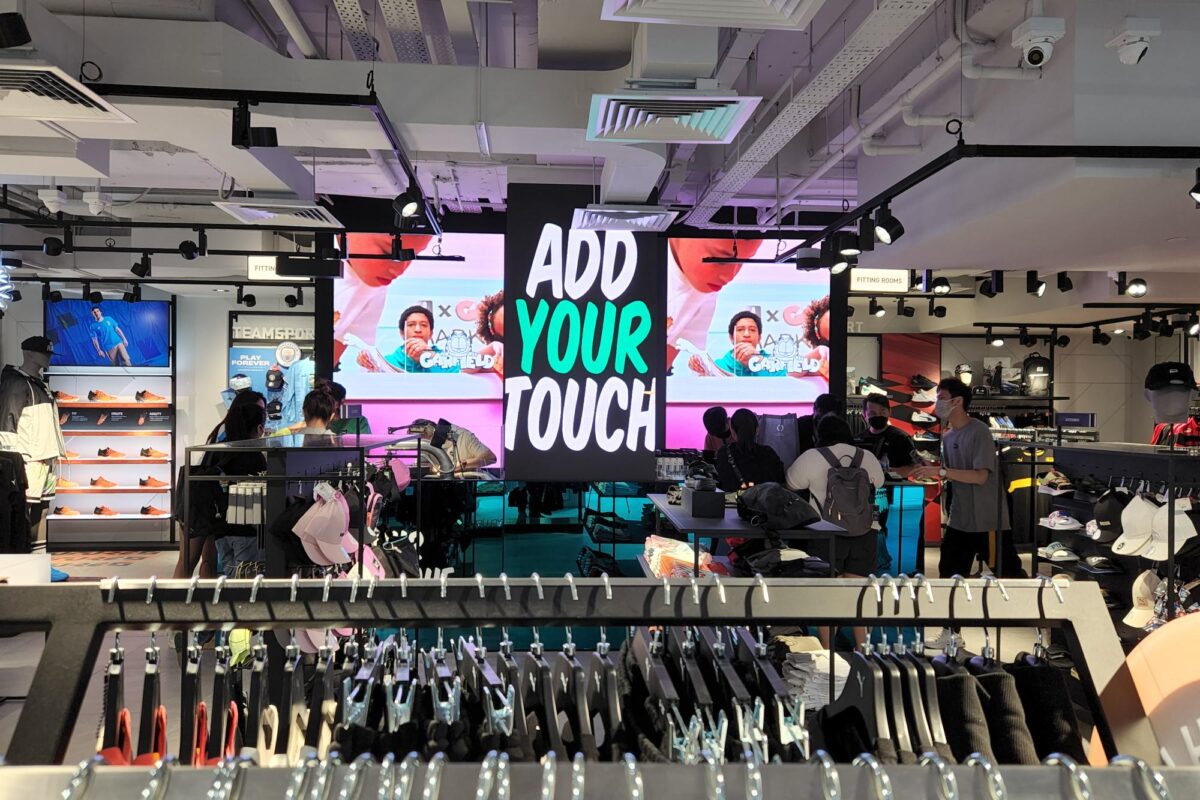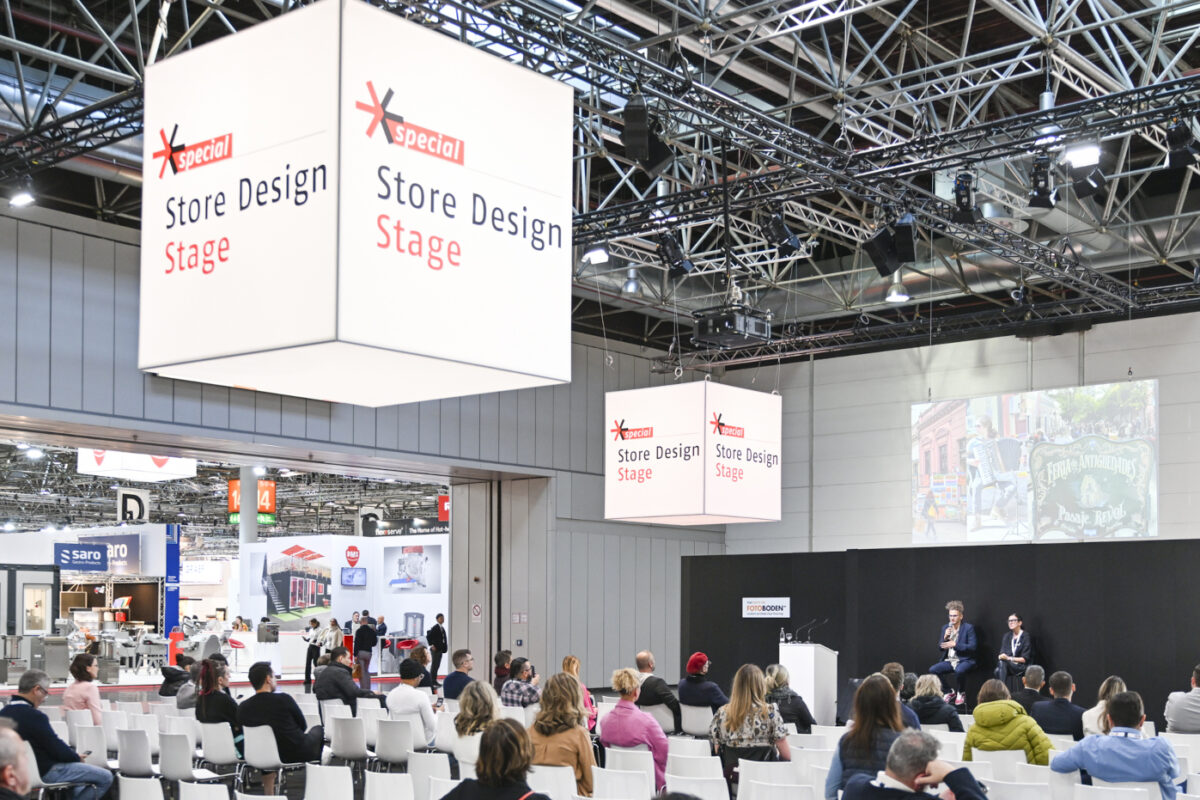Nomadic Retail, Place Marketing, Contactless Payment and Digital Shelving Systems
by Ilona Marx (exclusively for EuroShop.mag)
The coronavirus pandemic has hit the retail design industry – Hard. How has this affected related agencies and businesses? What design requests have clients made so far to implement hygiene safeguards? How do shopfitting agency owners rate the current state of retail? And will their job look like in the future? Christoph Stelzer, co-owner of the Stuttgart-based retail design agency Dfrost, Karl Schwitzke, co-founder of the Schwitzke Group, Mark Hülsemann, Key Account Manager Umdasch -The Store Makers, and Christian Vetterer, CEO at Visplay located in Weil am Rhein, answered these questions.
Below you will find the assessments of these retail design experts. Three months into this pandemic, they take the economic impact and social developments into their considerations and think far beyond the immediate impact of the coronavirus. A review.
A new form of ‘Nomadic Retail’
Christoph Stelzer, Managing Director and Co-Owner of Dfrost, Stuttgart
“Clients have not yet requested coronavirus-related design solutions from us. We are perceived as more of a creative agency, and protective Plexiglass shields or sanitizing stations are often bought as an addition and are not personalized and custom-made. I believe brands should make their hygiene and safety measures a key element of their brand DNA.
Like communication, these measures are a component of a coherent brand identity and customers should be able to recognize a consistent image. So far, I see more of a makeshift mindset as retailers still invest little in hygiene measures. Yet brand consistency is impossible to achieve if you order items from different suppliers.
In general, customers exhibit a decreased willingness to browse. They are more goal-oriented when they shop and spend less time. That’s why we must rethink and redefine the customer journey. We have to create highlight points along the central customer path to drive traffic to other departments – a classic merchandising strategy, except it must now focus on the central area.
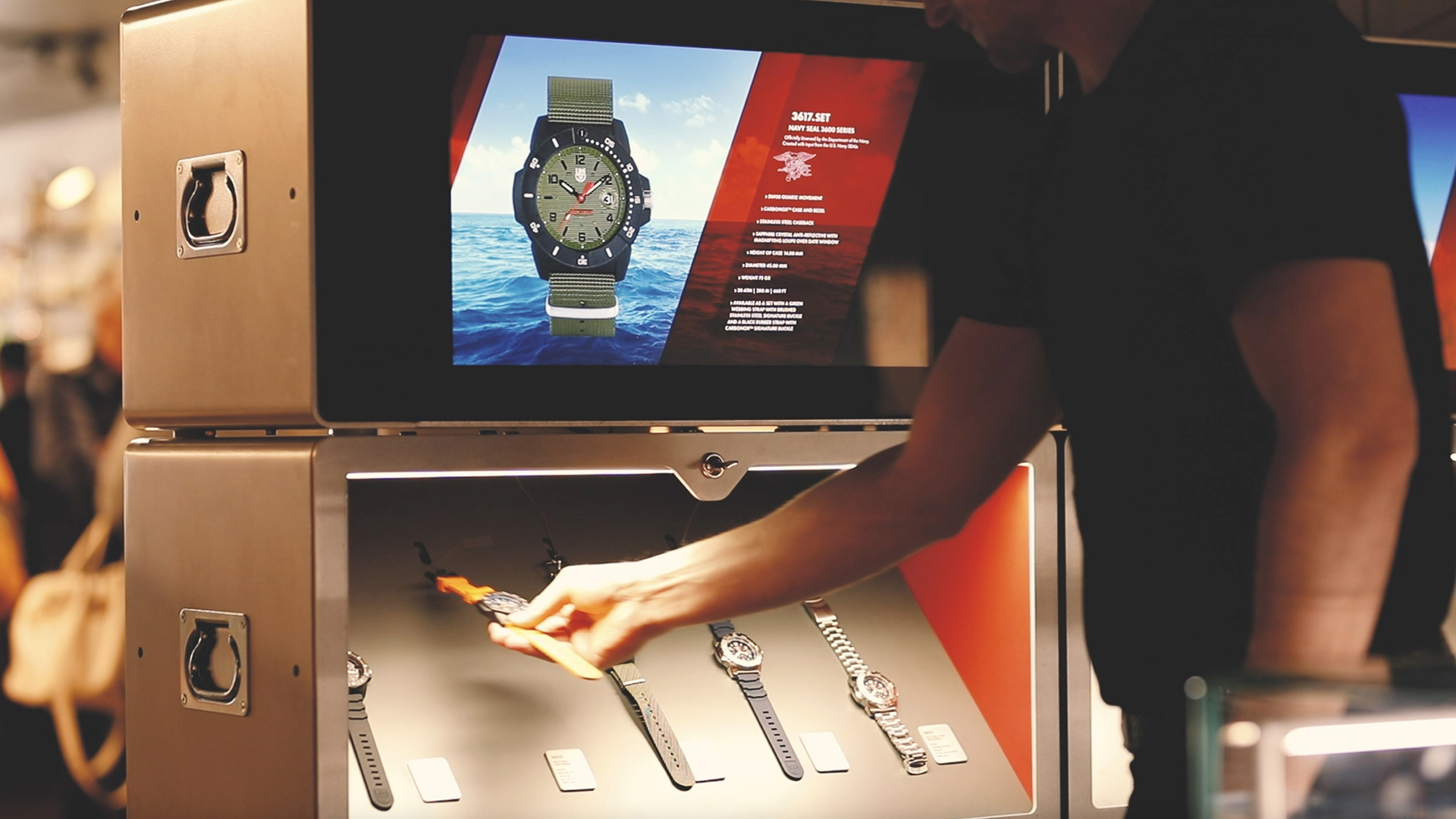
For the trade fair appearance of the watch brand Luminox, Dfrost developed a modular box system. The highlight of the stand was the integrated Lift & Learn function, which digitally provides the viewer with the history and information of the product. © Dfrost
An emerging topic on everybody’s radar pertains to the digital brand experience. We are presently working on creating a virtual trade show. We are envisioning a digital brand space enhanced with virtual and augmented reality elements. The virtual space must reflect the brand’s DNA in much the same way a store or trade show booths do. This also creates added value for customers, which is not as easy to communicate in the physical realm. Examples include adding another layer, such as an exploded view that highlights technical features. This boosts the product experience. My vision is a sales assistant, who helps customers to enjoy a wide range of multisensory experiences that would otherwise be lacking.
How will the coronavirus change the retail sector? Probably not as much as I would like. I sense that the solidarity mindset and the ‘buy local’ trend are already on a downward trajectory. Sustainability will continue to be a defining issue but will be increasingly affected by price sensitivity in the months to come. Prices could generally play a big role in the fall if consumers have to be more cautious and judicious with their spending. I think we might see more room for disruptions in cities in the future – and that offers big opportunities. I predict temporary, distinct, and sometimes cultural and hybrid formats and a healthier mix will come our way. This will be a new form of ‘nomadic retail’ with unusual pop-up concepts and plenty of space that carves space for curation and niches.”
Place marketing and four megatrends
Mark Hülsemann, Key Account Manager, Umdasch – The Store Makers
“Sustainability plays a big role. In our view, customer requirements and needs will adapt in many areas. Our job is to rethink aspects of quality and origin, meaning responsible sourcing. Made in Europe will take on a new meaning, which will result in more independent testing and certifications. We must review the supplier portfolio, production footprints, and supply chains. You need more solidarity and reliable partners – in good times and bad.
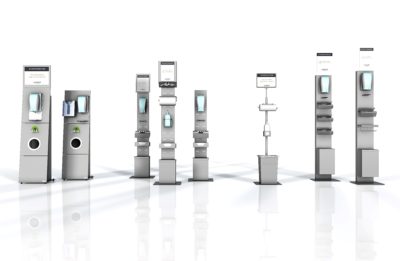
Hygiene solutions will certainly continue to accompany the retail trade for some time to come. © Umdasch – The Store Makers
Shopping for the sake of shopping has long been a thing of the past. Customized retail experiences will become more important than ever. It’s about hybrid concepts that deliver experiences, promotion, and entertainment – so-called place marketing. Future retail store concepts will be more than just a new version of a showroom. Retailers will feature tasting events or set up repair shops. Classes are becoming a popular way to elevate your brand and attract more customers.
When it comes to the physical store, we will have to rethink spatial requirements and store layouts: hygiene measures as you enter and leave the store are just as important as turning service areas into self-service stations. Click and Collect options are already popular, but digital access and entrance solutions that combine frequency analysis with health checks are also important. Touch applications should be reviewed and replaced by gesture control where necessary. I also promote the use of contactless payment methods and self-checkout solutions.
The coronavirus pandemic will definitely prompt changes in the shopfitting industry. Customers will change their behavior, especially when it comes to food and beverage consumption, home and garden supplies, and food delivery services. These categories are the big winners from the pandemic. We have deduced megatrends from the current setting, which we will focus on in the long term. We currently experience an increase in connectivity and personalization. Globalization, health, and safety are the other buzzwords in this context. The engines of growth will be neoecology, new work, and the silver society. We believe the four ambivalent megatrends that might drive innovation will be a knowledge-sharing culture, urbanization, gender shift, and a changing mobility landscape.”
The pros and cons of contactless payment
Karl Schwitzke, co-owner of the Schwitzke Group, Düsseldorf
“Coronavirus will help accelerate many developments. Apart from companies that are now struggling, there are also many big winners. The German retailer Manufactum is doing great, as are bike shops, garden centers, and hardware stores. German department store Breuninger has seen its sales bounce back, and Engelhorn’s online sales spiked and reached far beyond the retailer’s Mannheim location.
I don’t think that consumer habits have fundamentally changed. People in Düsseldorf eagerly returned to the city to shop post-lockdown. The trend for smaller retail spaces with fewer products has already been around prior to the pandemic. Shopping must become easier in the future. Nobody likes to wear a mask and wait in long lines at the checkout. That’s why I think decentralized payment platforms are overall a sensible approach. However, for this to work, every sales assistant must be empowered to accept payments.
When I look at our neighboring countries, I notice that our clients in Paris were much quicker back on track again. Companies with more than 100 years of history are simply not stressed by two months of lockdown. Their shopfitting projects proceed as planned, and the situation has normalized fairly quickly.
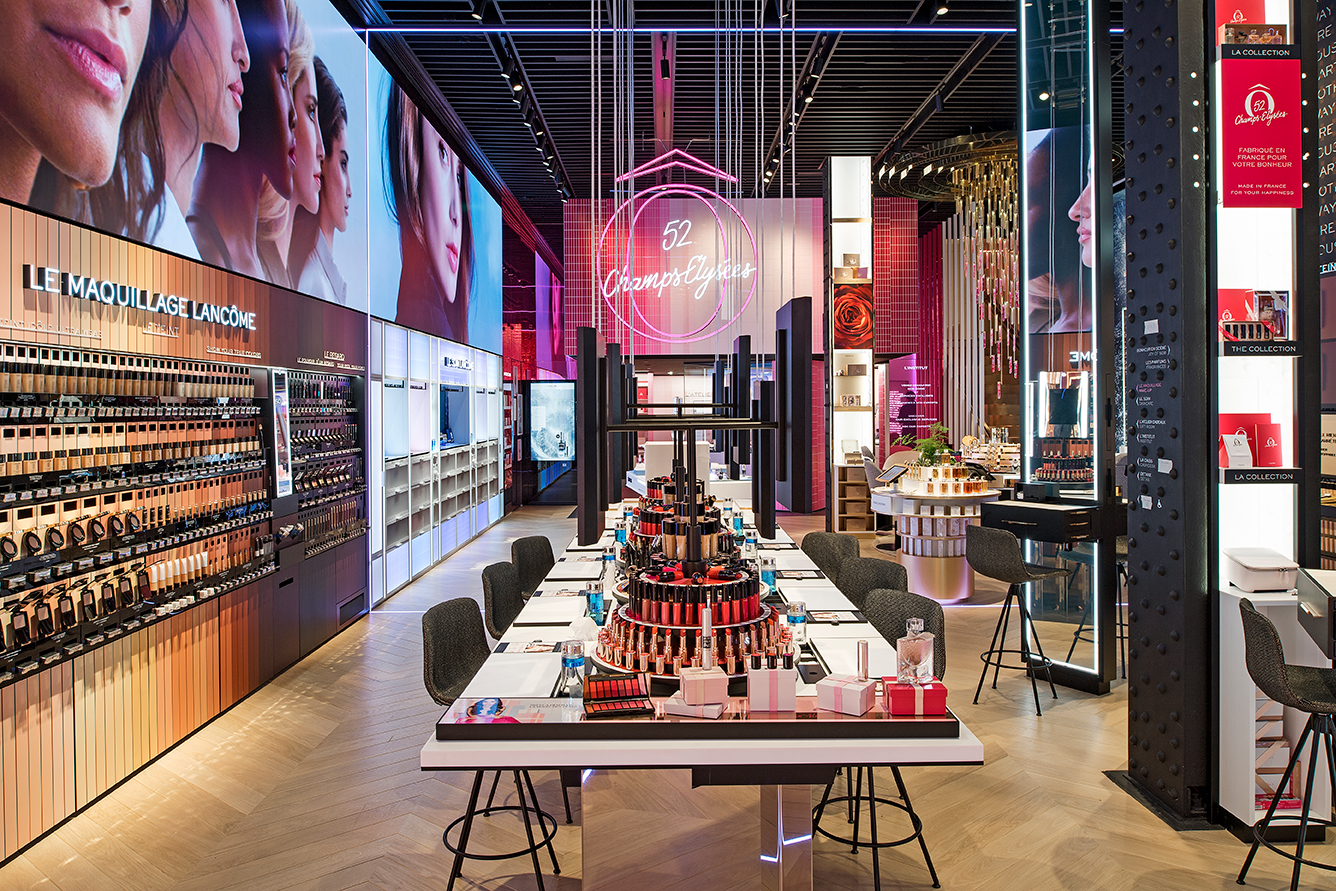
The Lancôme flagship store on the Champs Elysée in Paris focuses on maximizing the customer experience. © Schwitzke Group
Going forward, retailers will have to create services that cannot be easily replaced and that turn their stores into a meeting place. Commercial real estate is likely to face challenges as we will need less retail space, especially on the first or even higher floors. My message is: Stores must improve! Logistics, shopping, and design clearly pivot toward sustainability.”
Digital shelving systems
Christian Vetterer, CEO at Visplay
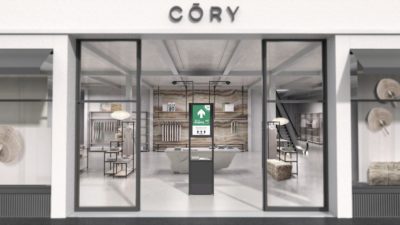
Digital access control systems are becoming the norm. © Visplay
“We presently don’t have any specific orders as retailers are still reviewing the different options for implementing hygiene concepts and infection control measures. Post-lockdown when stores reopened, we have teamed up with a digital partner to develop an access control system. This digital shelving system assists retail stores by managing the flow of customers without the use of personnel. It is run via app and can adapt to changing daily settings such as maximum occupancy. Once the COVID-19 restrictions have been lifted, the system can be easily integrated as a shelving system for merchandise display. Its built-in screen can be used to display advertising, while the cameras can support analytical tasks.
Even pre-COVID-19, shopfitting was heavily shaped by online retail. The pandemic-related lockdown has reinforced this development. Investments in brick-and-mortar retail are under careful review, while sustainability is becoming even more important for companies.
Yet in the midst of every crisis, lies great opportunity. We expect higher vacancies in many city centers. Building owners will have to win over new tenants with reduced rents to make spaces more attractive. More short-term leases, flexible pop-up stores, new retailers, and pure players could be the future for brick-and-mortar retail.”




